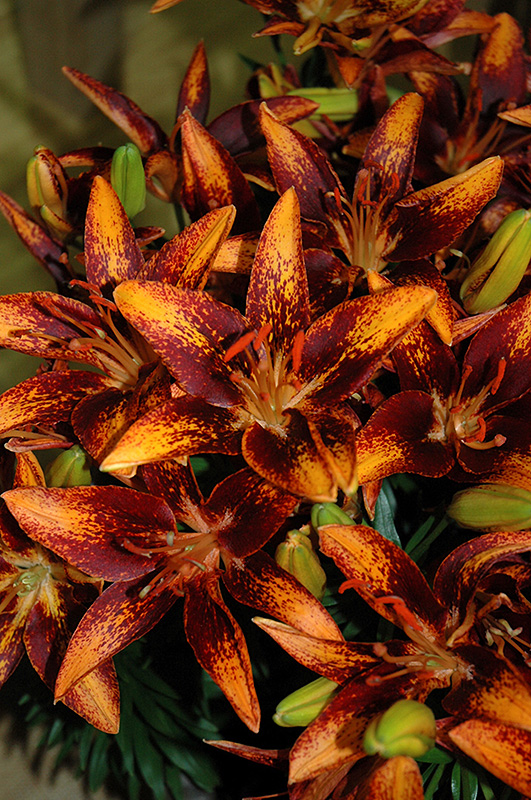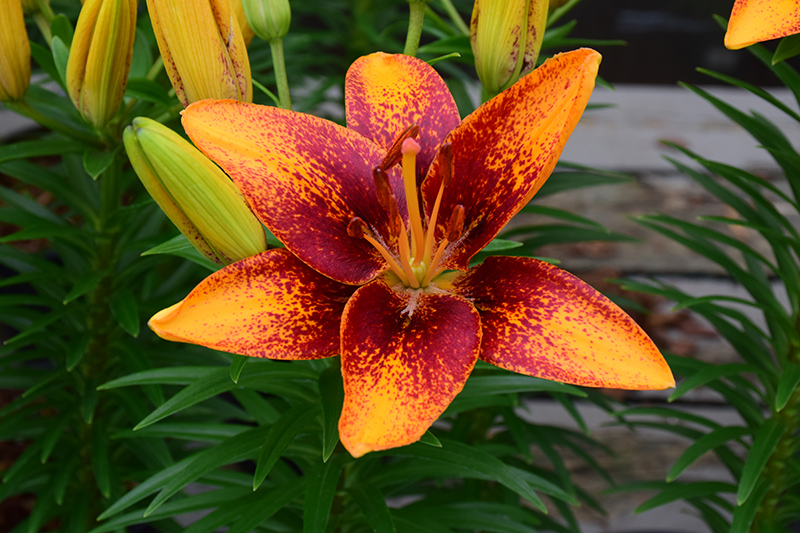Tiny Orange Sensation Lily
Lilium 'Tiny Orange Sensation'
Height: 18 inches
Spacing: 10 inches
Sunlight:
![]()
![]()
Hardiness Zone: 4
Group/Class: Dwarf Asiatic
Description:
These compact variety produces orange blooms that are heavily spotted in burgundy; perfect for garden containers, massing or border plantings; they tend to have more blooms per stem than most lilies which will definitely make an impact in the garden.
Ornamental Features
Tiny Orange Sensation Lily features bold orange trumpet-shaped flowers with burgundy overtones and burgundy spots at the ends of the stems in early summer. The flowers are excellent for cutting. Its narrow leaves remain green in color throughout the season.
Landscape Attributes
Tiny Orange Sensation Lily is an herbaceous perennial with a rigidly upright and towering form. Its medium texture blends into the garden, but can always be balanced by a couple of finer or coarser plants for an effective composition.
This plant will require occasional maintenance and upkeep, and should be cut back in late fall in preparation for winter. Gardeners should be aware of the following characteristic(s) that may warrant special consideration;
- Insects
- Disease
Tiny Orange Sensation Lily is recommended for the following landscape applications;
- Mass Planting
- General Garden Use
Planting & Growing
Tiny Orange Sensation Lily will grow to be about 14 inches tall at maturity, with a spread of 12 inches. When grown in masses or used as a bedding plant, individual plants should be spaced approximately 10 inches apart. It grows at a fast rate, and under ideal conditions can be expected to live for approximately 10 years. As an herbaceous perennial, this plant will usually die back to the crown each winter, and will regrow from the base each spring. Be careful not to disturb the crown in late winter when it may not be readily seen!
This plant does best in full sun to partial shade. It does best in average to evenly moist conditions, but will not tolerate standing water. It may require supplemental watering during periods of drought or extended heat. It is not particular as to soil type or pH. It is somewhat tolerant of urban pollution. Consider applying a thick mulch around the root zone in both summer and winter to conserve soil moisture and protect it in exposed locations or colder microclimates. This particular variety is an interspecific hybrid. It can be propagated by multiplication of the underground bulbs; however, as a cultivated variety, be aware that it may be subject to certain restrictions or prohibitions on propagation.


